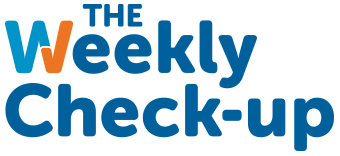To err is human, to check your work, genius (Part II)

Last post, I had discussed the standardization and adoption of electronic medical records in the Affordable Care Act (ACA), the huge healthcare reform law that was just declared constitutional by the Supreme Court. One of the benefits of an electronic medical record that most non-medical people do not know about are referred to as Clinical Decision Support Systems (CDSS). These are computer programs built into the medical record computer program that aid physicians in making decision on how to manage care.
Some of these CDSSs remind doctors to prescribe certain medications or certain doses for common medical conditions, enroll them in preventative healthcare or other important but easy to forget things. Some CDSSs provide summarized medical literature that is updated regularly to keep doctors informed and others provide relevant patient information to the doctor automatically. These CDSSs have lots of promise and can, in theory, make keeping up with all of the information a doctor has to know much simpler and allow them to focus on taking care of the patient.
As medical science has become more and more advanced, the body of knowledge required to be a doctor has increased as well. At the current rate of growth, the amount of information a medical student has to learn in medical school just to be a doctor in training, or resident, doubles every 8 to 10 years. One way that medicine has dealt with this is by having doctors be increasingly specialized, but even this solution is not sufficient. Doctors have to engage in life long learning to stay on top of all the new developments and discoveries and CDSSs represent a way to help doctors stay current.
In the past medicine was simple enough to be managed by a bright doctor with a few years experience under his belt. Now, with so many complex treatment and diagnostic options each requiring numerous steps that change all of the time, no human can be expected to keep every thing straight and done correctly. Even the best doctor will forget a small step or have an oversight and potentially cause harm to their patient. There have been suggestions that doctors begin using checklists, much like pilots do, especially in complex and error prone situations such as in the Intensive Care Unit or in surgery. There have been very promising results from initial studies looking at the use of checklists. Infections originating from central lines, the tubes that bring medication to the large veins near the heart, are a common complication that can be all but eliminated using these checklists. Similar results have come from the use of checklists in preventing pneumonia from the ventilator and making sure pain is well controlled. Checklists are slowly catching on and could be a way to reduce healthcare spending.
With such a benefit from a simple checklist, it is no wonder that CDSS are seen as another way to help doctors stay current, well informed and armed with the correct information in the face of increasing medical knowledge. But just as a new medication, diagnostic test and even checklist must be studied to prove that it is effective, the CDSSs have also been studied. Check back soon for what researchers looking at all of these studies concluded and what that means for CDSSs.
Be Well,
Dr. Bruce Feinberg


